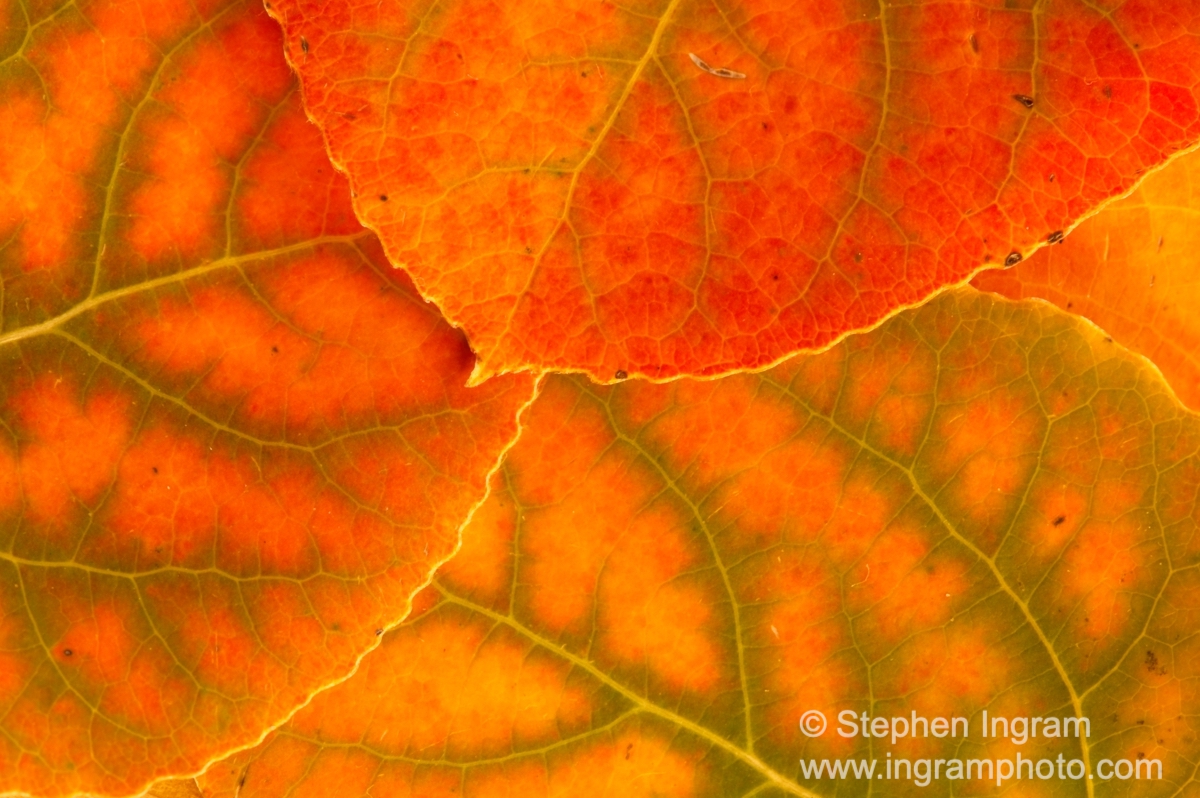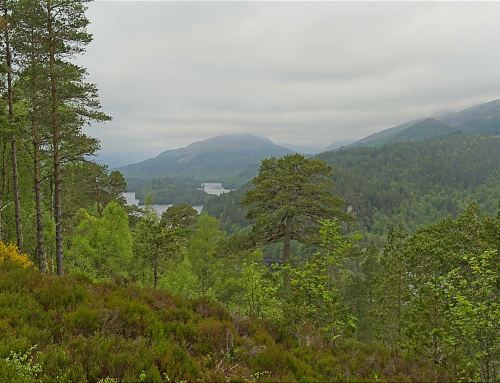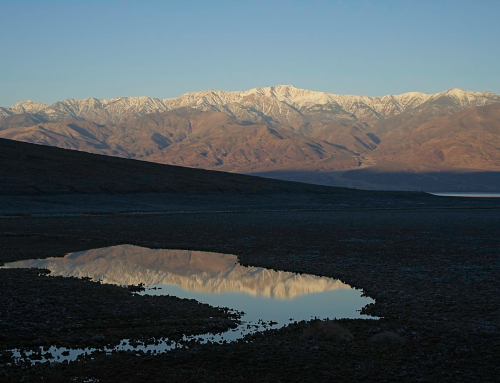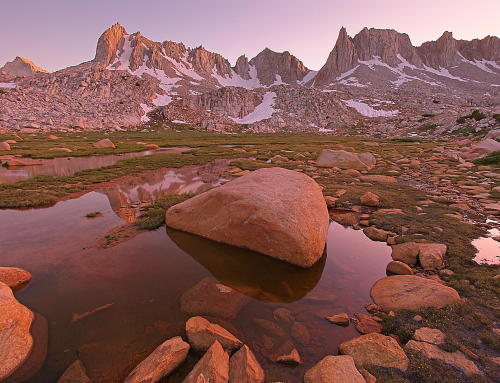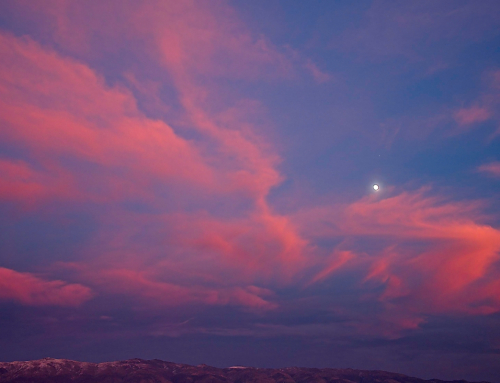Between the pandemic, months of heavy smoke from the Creek Fire, and the closing of local National Forest wilderness areas and campgrounds, it has been a challenging autumn season for getting out to view the changing colors in the Eastern Sierra. However, high elevations have often been smoke-free in the morning, and numerous mountain roads and front-country trails allow easy access to golden orange and bright yellow stands of aspen, water birch, black cottonwood, and other deciduous trees and shrubs. And despite the often gloomy, smoke-filled skies, 2020 is a great year for fall color! What causes these colors, and what are the best conditions for producing the most vivid fall color?
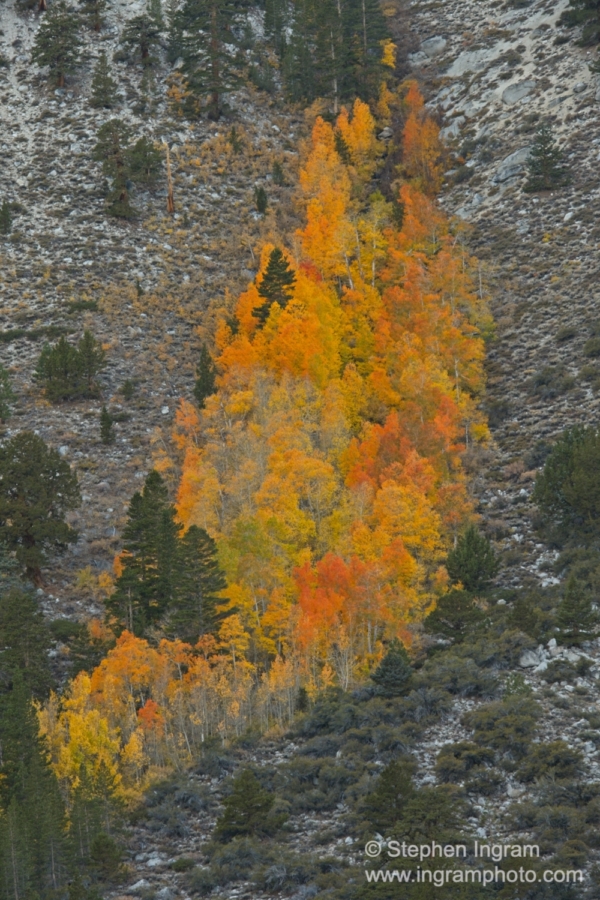
Quaking aspens in a gully show a wide range of leaf colors, Upper Rock Creek Canyon.
The green color of leaves is due to chlorophyll pigments present in the chloroplasts of leaves. Chloroplasts house the photosynthetic “machinery” where absorbed light energy combines with water and carbon dioxide to drive the production of sugars for the plant’s growth and development. Chlorophyll is the most abundant pigment in leaves, and it absorbs light at red and blue wavelengths, reflecting green. Other accessory pigments, such as carotenoids, absorb light at blue-green and blue wavelengths, thus reflecting yellow.
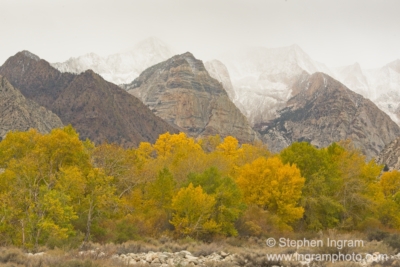
Black cottonwoods (Populus trichocarpa) and other trees line Pine Creek in Pine Creek Canyon.
These additional pigments help create more efficient use of the sun’s energy. During the warm summer growing season, chlorophyll continually gets used up and regenerated in this process of photosynthesis. As the cold temperatures of autumn approach, chlorophyll production slows, and the more stable yellow and orange carotenoid pigments present in the leaves begin to show through.
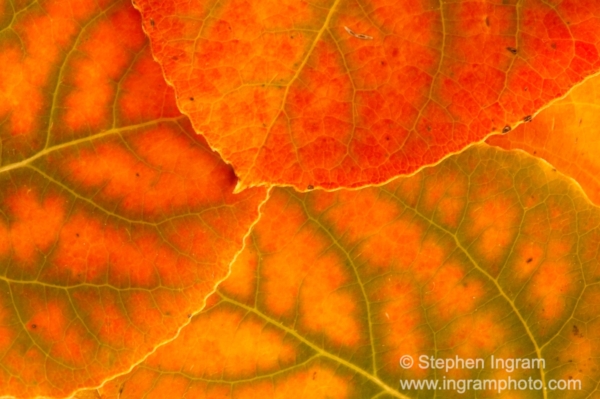
The last of the green chlorophyll pigments are present along the main veins of these quaking aspen (Populus tremuloides) leaves.
A third type of pigment, anthocyanin, is produced in the leaves of some species under certain conditions. Anthocyanins help protect leaves from excessive late summer sunlight, and enable the plant to recover the sugars and nutrients present in the leaves just before they fall. Red anthocyanin pigments are produced when days are clear and bright—conditions that favor high sugar concentration in cell sap, and the subsequent production of more anthocyanins. It is these anthocyanin pigments that darken the orange of some aspen and birch leaves, and turn some leaves a brilliant red, such as creek dogwood. The most vivid reddish colors are produced after clear, dry, warm days and cool, dry nights that remain above freezing.

Fall colors of quaking aspen, water birch, and willows (Salix spp.) with a Jeffrey pine (Pinus jeffreyi), Lower Rock Creek
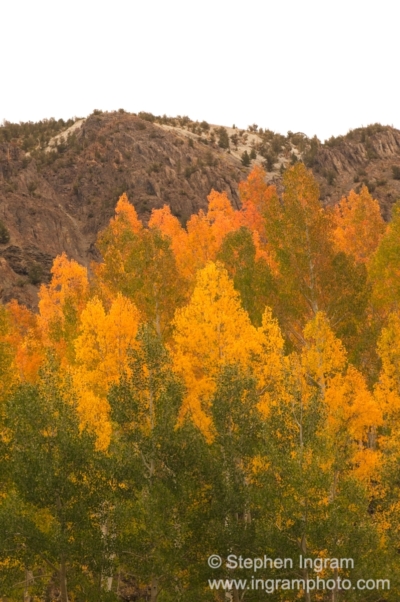
Green, yellow and orange leaves of aspen trees, Bishop Creek Canyon.
Deciduous trees and shrubs drop their leaves to conserve water during the winter season. With colder temperatures and shorter days, and the ensuing loss of chlorophyll and slowing of photosynthesis, an abscission layer forms between the leaf petiole and stem. Plant hormones then signal for the cells in this layer to elongate and break away from the stem, sealing off the plant stem from water loss, and sending the leaf drifting to the forest floor. Fallen leaves scatter their fading colors over the ground, and eventually fade to brown. As leaves slowly decay, they feed insects, worms, fungi, and soil microbes, which act to release nutrients that plants can use for future growth. Autumnal sunlight thus acts to transform the aspen forests of the Eastern Sierra from green to yellow to leafless, as the earth tilts on its axis and carries our region into winter.
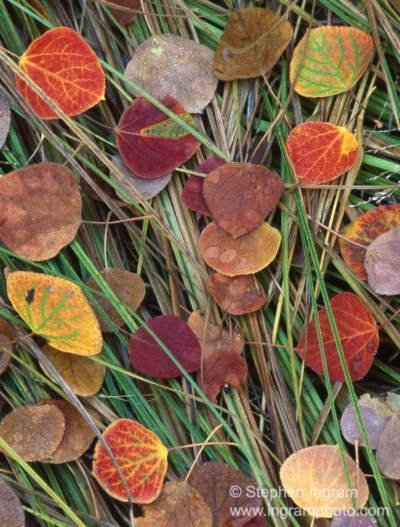
A wide range of colorful aspen leaves decay on the forest floor of Lee Vining Canyon.

